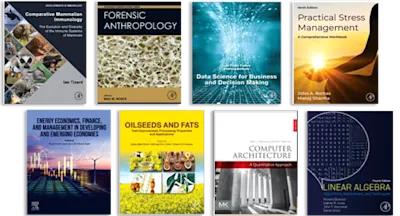
Medical Communication Skills and Law Made Easy
The Patient-Centred Approach
- 1st Edition - May 26, 2009
- Imprint: Churchill Livingstone
- Authors: Tsong Kwong, Ann O'Brien, Qiang Kwong, Kate Hill, Joanne Haswell
- Language: English
- Paperback ISBN:9 7 8 - 0 - 7 0 2 0 - 3 0 8 3 - 3
- eBook ISBN:9 7 8 - 0 - 7 0 2 0 - 7 8 8 9 - 7
- eBook ISBN:9 7 8 - 0 - 7 0 2 0 - 4 8 0 8 - 1
Communication skills are an increasingly important part of the medical curriculum. This book aims to give didactic guidance on the appropriate style and content of communication… Read more
Purchase options

Communication skills are an increasingly important part of the medical curriculum. This book aims to give didactic guidance on the appropriate style and content of communication for medical students and F1 doctors in those common situations they are likely to encounter both on the ward and in OSCE examinations. In each case any legal points or potential pitfalls are highlighted. Part of the Made Easy series, the book is small in format and extent and presents only the essentials in a way that is highly accessible for the busy medical student already overloaded with information. What to say to patients is a major cause of insecurity and worry amongst medical students and this book provides the perfect answer. Unlike all other books on communication skills the whole emphasis is on practical guidance in specific situations, rather than exploring the background to communication skills or the underlying principles.
- Practical guidance on what to say to patients in common situations in the clinic and on the wards.
- Includes legal guidance for all situations.
- Example OSCEs provided to prepare for examinations.
Clinical medical students and F1 doctors
Section 1: The basicsIntroduction. The basics of medical interaction.Informed consent and adults with capacity.Informed consent and adults who lack capacity.Breaking bad news.Section 2: Special communication situationsPatient confidentiality. Explaining results. Communicating with children. Communicating with other special patient groups. Explaining patient discharge (foundation year level). Dealing with potential self-discharging patients (foundation year level). Dealing with angry patients and relatives (foundation year level). Dealing with introspective patients (foundation year level). Dealing with poor adherence.Section 3: Achieving the patient-centred historyGeneral history taking. Cardiovascular history. Respiratory history. Gastrointestinal history.Genito-urinary history. Gynaecological and obstetric histories. Legal guidance on termination of pregnancy. Neurological history. Psychiatric history and mental health. Paediatric history. Pre-operation clinic.Section 4: HIV counsellingHIV The basics. Social impact. Pre-HIV test counselling. Giving test results. Legal guidance – HIV and AIDS.Section 5: Explaining disease XExplaining disease. Explaining asthma. Explaining depression. Explaining angina. Explaining osteoarthritis. Explaining appendicitis (surgical case). Explaining cystic Fibrosis (genetic origin). Explaining type 1 diabetes. Explaining type 2 diabetes. Explaining hepatitis B. Explaining eczema. Explaining epilepsy. Explaining cancer..Section 6: Explaining drug YExplaining drugs and medication.Explaining atenolol. Explaining statin therapy. Explaining SSRI drugs. Explaining asthma medication. Explaining aspirin. Explaining oral hypoglycaemics (metformin). Explaining combined oral contraceptive pill (OCP). Explaining warfarin. Explaining steroid use.Section 7: Explaining device ZExplaining devices. Explaining GTN spray. Explaining insulin injector pens. Explaining peak flow meters. Explaining inhalers. Explaining adrenalin pens.Section 8: Explaining proceduresExplaining procedures. Explaining central line placement. Explaining angiograms. Explaining exercise stress test. Explaining OGD for epigastric pain. Explaining colonoscopy/flexisigmoidoscopy (C/FS) for PR bleeding. Explaining bronchoscopy for haemopytsis. Explaining ERCP for gallstones.Explaining lumbar puncture.Section 9: Explaining surgical operationsExplaining surgical operations. Explaining appendicectomy. Explaining laparoscopic cholecystectomy. Explaining inguinal hernia repair.Section 10: OSCE scenariosSituation 1 New diagnosis of asthma. Situation 2 Explaining asthma medication. Situation 3 Oral combined contraceptive pill. Scenario 4 HIV test counselling. Scenario 5 HIV test results counselling. Scenario 6 Laparoscopic cholecystectomy. Scenario 7 Angina patient. Scenario 8 Depression, anxiety and suicide.Appendix 1: Clinical negligenceAppendix 2: A summary of the British legal structureAppendix 3: Notifiable diseases
- Edition: 1
- Published: May 26, 2009
- Imprint: Churchill Livingstone
- Language: English
TK
Tsong Kwong
Affiliations and expertise
FY2 Doctor, Homerton NHS Trust, London, UKAO
Ann O'Brien
Affiliations and expertise
Clinical Teaching Fellow, Academic Unit for Community-based Medical Education, Institute of Health Sciences Education, Queen Mary's School of Medicine and Dentistry, London, UKQK
Qiang Kwong
Affiliations and expertise
FY" Doctor, St Mary's Hospital NHS Trust, London, UKKH
Kate Hill
Affiliations and expertise
Solicitor, RadcliffesLeBrasseur; Managing Director, InPractice Training, London, UKJH
Joanne Haswell
Affiliations and expertise
Barrister; Director, InPractice Training, London, UK